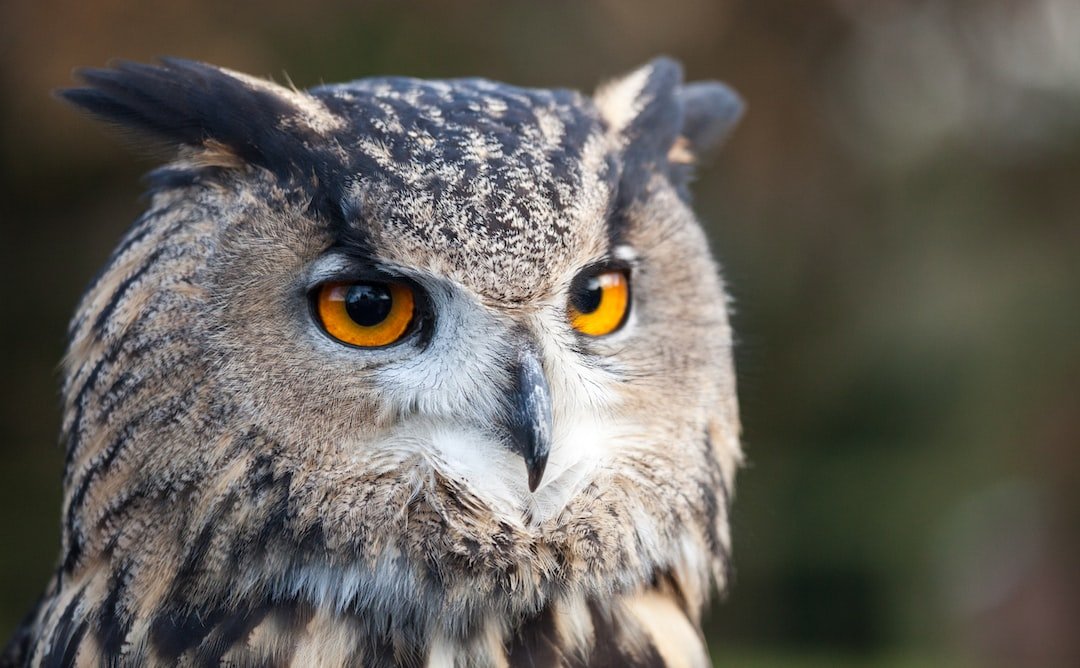The Mysterious World of Owl Sleep Patterns and Behavior
Category : Owl behavior and communication | Sub Category : Owl sleep patterns and behavior Posted on 2023-07-07 21:24:53

The Mysterious World of Owl Sleep Patterns and Behavior
Introduction:
The fascinating creatures of owls have fascinated humans for centuries. They have become symbols of wisdom and nocturnal beauty because of their unique features. Owl life is particularly intriguing because of their sleep patterns and behavior. We will explore the world of owl sleep and learn about their nocturnal lifestyle in this post.
1 Owls are nocturnal.
Owls are most active during the night. They have adapted their sleep patterns to maximize their hunting abilities. owls are highly nocturnal and rely on their low-light vision and exceptional hearing to navigate and locate prey in the dark.
2 Silent Flight has been adapted for other purposes.
owls are efficient hunters because they can fly silently. The comb-like edges of their feathers help to break up the air and reduce noise during flight. They can sneak up on their prey without causing a commotion. The Barn Owl is a species that has mastered the silent flight technique, which allows them to be stealthy hunters.
3 Rest time: daytime
owls need rest during the daytime owls do not sleep for long periods of time, they sleep in short spurts throughout the day. They perch in trees, camouflaging themselves, giving the illusion of a continued state of vigilance.
4 There are sleep positions.
owls show off various unique sleep positions when they sleep at night They can sleep with their eyes closed or partially open. This allows them to respond quickly to any threats or prey nearby. Some owl species have an amusing behavior called "head tuck," where they tuck their heads back, seemingly talking a nap with their face under their wing.
5 Prolonged vigilance.
The owls have an adaptation that allows them to remain alert while sleeping. They have excellent binocular vision because of their forward-facing and fixed sockets. Even when asleep, this arrangement allows them to maintain consistent focus. They can respond quickly to any sudden stimuli, such as the movement of prey or the approach of a predator.
Conclusion
The sleep patterns and behaviors of owls are remarkable. Their ability to navigate the darkness and silent flight make them formidable nocturnal predators. owls demonstrate the marvels of evolution with their unique sleep positions and vigilant nature. If you spot an owl in a tree during the day or hear hoots at night, remember that the owl's sleep patterns and behavior are behind those captivating eyes.
Leave a Comment:
SEARCH
Recent News
- Zurich, Switzerland is not only known for its picturesque landscapes and vibrant culture but also for its diverse wildlife. While the city may be more commonly associated with its financial sector and luxury shopping, there are some rare and fascinating animals that call Zurich home.
- YouTube Content Creation: Showcasing Rare Animals through Translation
- If you are a nature enthusiast and love learning about rare and exotic animals, there are several YouTube channels dedicated to showcasing these fascinating creatures in their natural habitats. These channels provide a unique opportunity to educate yourself about lesser-known species and the importance of conservation efforts.
- The Importance of Developing Rare Skills Like a Rare Animal in the Workplace
- Women in Politics: Breaking Barriers and Making History
- Warsaw, the capital city of Poland, is not only known for its rich history and beautiful architecture but also for its unique and diverse wildlife. Despite being a bustling urban center, Warsaw is home to some rare and fascinating animals that can be found in various parks, forests, and reserves in and around the city.
- Vietnam is a country known for its rich culture, beautiful landscapes, and delicious cuisine. However, it is also home to a variety of rare and endangered animals that are found nowhere else in the world. In recent years, some Vietnamese businesses and companies have taken initiatives to help protect these precious species and their habitats.
- Vienna, the capital city of Austria, is known for its rich history, stunning architecture, and vibrant cultural scene. But did you know that Vienna is also home to a variety of rare and interesting animals? From exotic species at the Vienna Zoo to elusive wildlife in the surrounding countryside, there are plenty of fascinating creatures to discover in and around this beautiful city.
READ MORE
3 weeks ago Category : owlo

Zurich, Switzerland is not only known for its picturesque landscapes and vibrant culture but also for its diverse wildlife. While the city may be more commonly associated with its financial sector and luxury shopping, there are some rare and fascinating animals that call Zurich home.
Read More →3 weeks ago Category : owlo

YouTube Content Creation: Showcasing Rare Animals through Translation
Read More →3 weeks ago Category : owlo

If you are a nature enthusiast and love learning about rare and exotic animals, there are several YouTube channels dedicated to showcasing these fascinating creatures in their natural habitats. These channels provide a unique opportunity to educate yourself about lesser-known species and the importance of conservation efforts.
Read More →3 weeks ago Category : owlo
